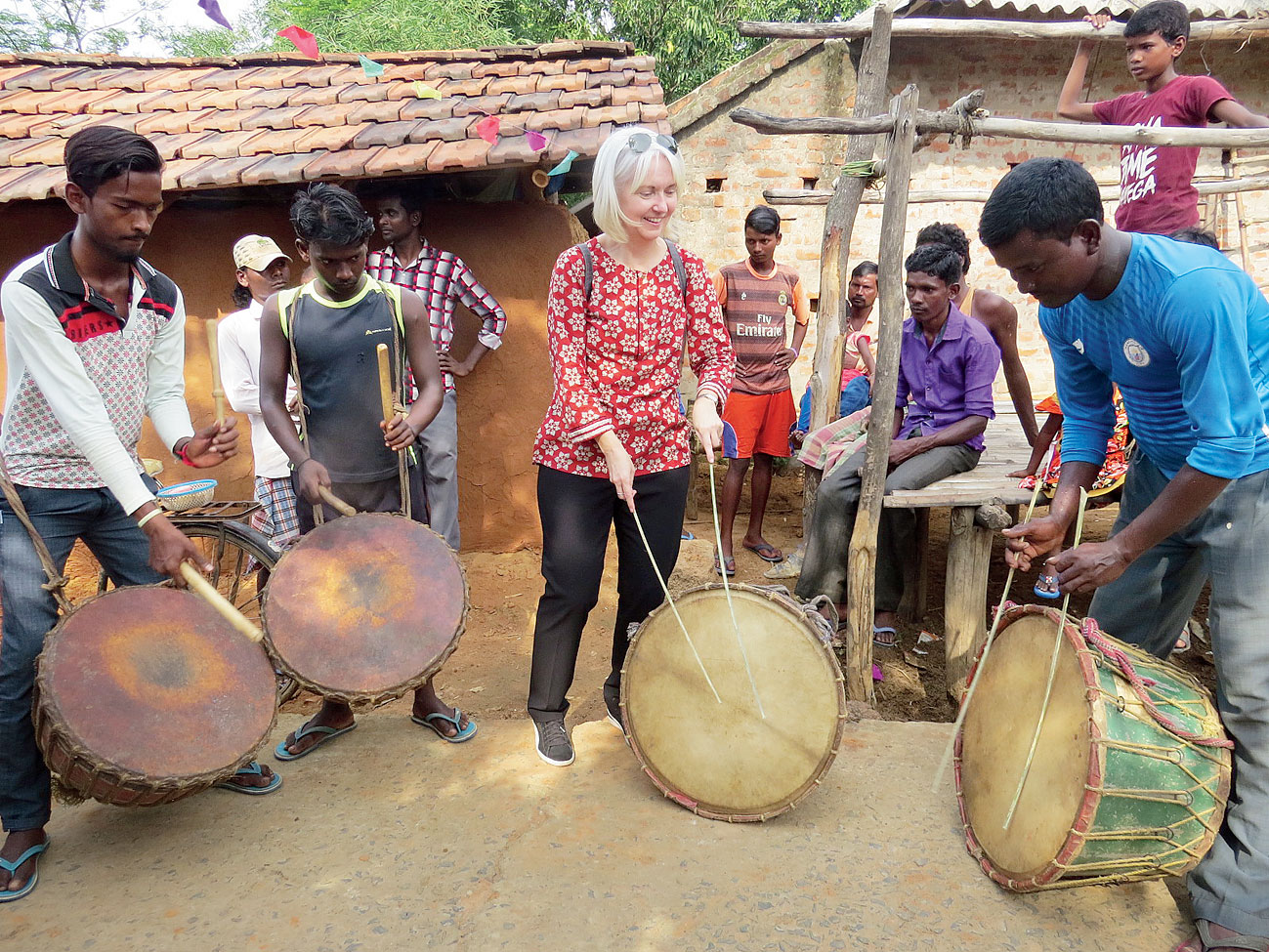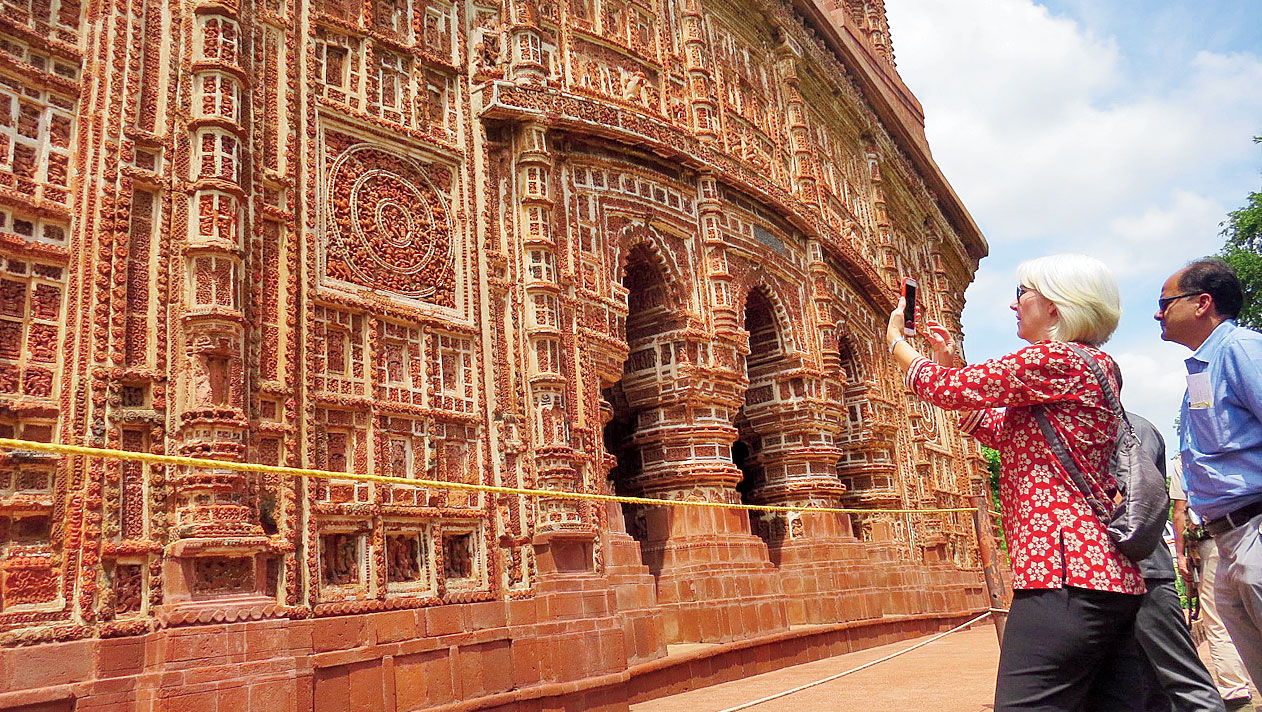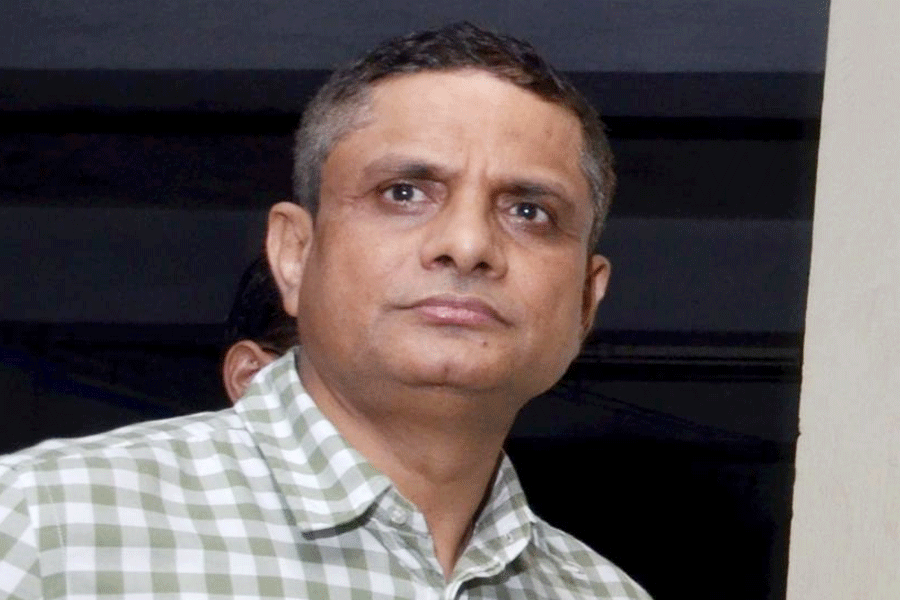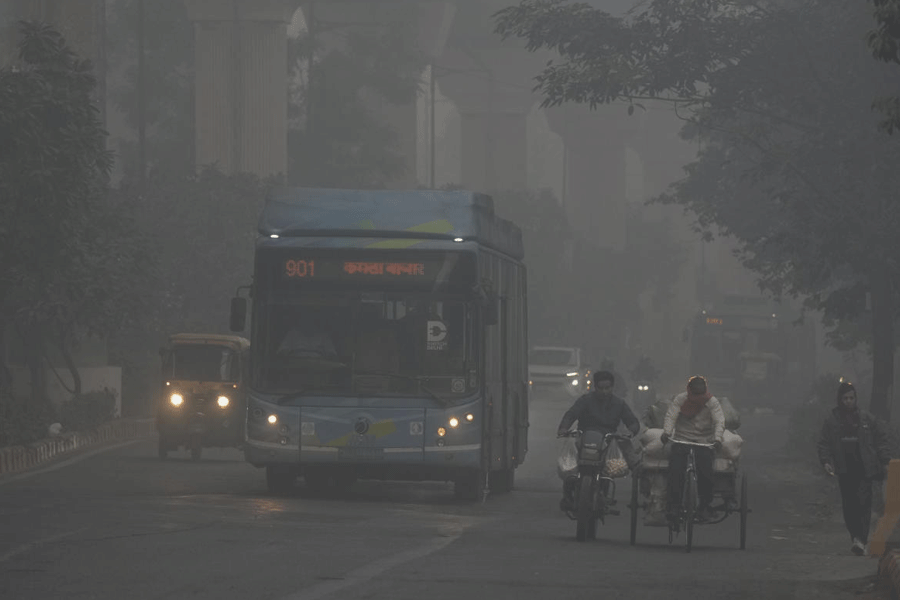Men wielding bow and arrow or spears or playing musical instruments. Women dressing up. Animals in the wild or domesticated. “Each panel tells a story. You cannot appreciate the whole without appreciating the parts,” exclaimed Patti Hoffman on close inspection of the walls of Jor Bangla temple.
The US consul general was on a tour of Bishnupur in Bankura district on invitation from the NGO Freed and the famed terracotta temples, dating back to the 17th and 18th centuries, were at the top of her itinerary.

Hoffman walks towards Rasmancha that has a pyramidal roof Picture by author
The twin hut structure, built in 1655, had exquisite and elaborate terracotta ornamentation on panels that narrated scenes from the epics and contemporary social milieu. There were several animals too. “It seems as if the elephants are holding up the structure,” she said, pointing to carvings of tuskers carrying branches in trunks, on panels at the base of the wall.

In the evening, Hoffman was witness to a Chhau dance show at a village ground. As the members of Anwesha Chhou Academy put on an energetic performance dressed in their colourful masks, she was seen taking pictures. “They are so acrobatic — twists and jumps and somersaults in the air! I can only imagine how much practise it took to put that together,” she said. Picture by author
“How did this pyramid-like structure get here?” Hoffman wondered on seeing Rasmancha from afar. “No other structure in India has such apparent Egyptian influence,” said Somnath Pyne, the director of Freed, who was showing her around. “The arches bear Islamic signature but the chalas, resembling roofs of huts, are classic Bengal architecture,” he explained.
The late morning sun was beating down upon the touring party and it was a relief to take shelter under the thick brick enclosure. “This is not a temple but a gallery. A deity would be placed in each alcove on the laterite stone altar for display during Ras festival. Hence the name Rasmancha,” Pyne said, adding that the platform was for people to walk around on.
An engineer, he also highlighted the marvel of a structure that was supported only by the arches and had no beams. “I have seen pyramids in Egypt and Mexico. They are larger but have a similar feel as Rasmancha. This place must have been a rich and thriving kingdom,” Hoffman said.
She also visited the laterite Radhagobindo temple, stopping to inspect a brick chariot next to it.
The formidable Dolmadol cannon, which helped repulse Maratha invaders in 1742, was her last stop.

Hoffman plays the dhamsa Picture by author
The consul general visited the Freed Resource Centre in Joykrishnapur nearby and interacted with the girls learning computer basics. “They are mostly first-generation learners from backward classes. We teach computers and English communication. We also provide tutorial support to girls appearing in Class XII board exams. This centre is running since 2007,” said Pyne.
Radhika Soren and Purnima Bagdi had never seen anyone so “forshsa” (fair-skinned) before. On being told that their guest was from the US, they nodded knowingly: “Bhugol boi-tey dekhechhi America. (Seen America in geography text book). No one from so far comes to our village.”
Purnima, a farmer’s daughter, dreams of being an engineer. Radhika’s mother is a field labourer. She is learning how to operate a computer so she can apply online for her scheduled tribe scholarship herself.
Hoffman also visited a forest fringe hamlet called Banscopa in Beliatore range that is home to 50 tribal families. Tots welcomed her with posters bearing her photograph while women put up synchronised tribal dance. “We have set up a solar microgrid here. Every family has got a connection. We plan to start eco-tourism here, offering home stays,” said Pyne.
Hoffman was impressed. “Sometimes problems in the world seem so overwhelming that people freeze and don’t know how to help. Here is an example of Freed setting up computer training centres, educating and providing valuable skills to the girls, providing solar power to the village which, I am told, did not have electricity before... That is such a direct, positive impact,” she said.

In a tribal school classroom Picture by author
In the afternoon, Hoffman visited a jacquard loom in the house of a weaver to see how a Baluchari sari is woven. She was shown how a design is transferred to perforated cards fitted to the loom to facilitate weaving of figures on silk fabric. “The setting up of the loom for each sari itself takes three days,” Pyne said. The weaver, Tarak Nath Rakshit, showed Hoffman his latest innovation — a 3D sari!
But Hoffman wanted to stick to tradition once it was explained how traditional Baluchari saris tell stories from the epics. The one she purchased had motifs from Shakuntala’s wedding. “I like to pick up things from places I am posted at. When you move on you take the things with you. They are special memories,” she told t2.










